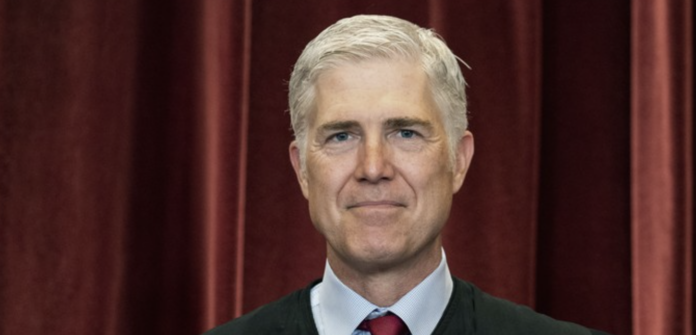The Supreme Court delivered another wild ride on Friday as several highly anticipated decisions were handed down. This left Democrats in a state of shock.
RedState reported that Joe Biden’s obviously illegal student loan scheme had been stopped in its tracks. This put an end to a cynical scheme by the president to buy votes ahead of the mid-term elections in 2022.
The 303 Creative case was on the other side, and once again the future of religious freedom in the United States was at stake. Another 6-3 ruling won out in the end. It ruled that Lorie (the owner of the business) was not compelled to violate religious beliefs when creating websites for gay marriages.
It’s not surprising that the case was brought in Colorado. This is the same state which has been harassing Jack Phillips for the past decade. In 2018, the Supreme Court ruled in Phillips’ favor by a small margin, but Colorado’s Civil Rights Commission continues to harass him.
In the 303 Creative case, the ruling was a little broader. The court found that the government cannot force an individual to convey a message which violates his or her sincerely held religious beliefs.
In response, the Alliance Defending Freedom (Townhall), which was at the forefront of this charge, issued a statement.
The court reiterated its view that it is unconstitutional to remove from public discourse ideas that the state dislikes. This includes the belief that marriage involves the union of a husband and wife. Waggoner stated that disagreement is not discrimination and the government cannot mislabel speech to censor its content. “Lorie is a professional who works with all clients, including those who identify as LGBT. The court emphasized that her decisions about creating speech are always based on the message requested and never on who is asking for it.
The ruling confirms that non-discrimination law remains in force and that government has never had to enforce speech to guarantee access to goods or services. All Americans should be happy about this ruling. Lorie’s marriage beliefs should not be censored by the government, nor should it punish a graphic designer who is LGBT for refusing to criticize same sex marriage. “If we want freedom for ourselves, then we have to defend it for other people.”
But the fun didn’t end with the ruling. Justice Neil Gorsuch did not hold back in his scathing critique of Justice Sonia Sotomayor’s absurd, confused dissent. He slammed Sotomayor for her twisted logic, in which she jumped from one side to another without a single hint of an interpretation standard.
The dissent is not consistent with the case. It focuses a lot on the evolution in public accommodation laws (post, at 7-13) and the progress gay Americans have made to secure equal justice under the law (post, at 14-17). There is certainly much to be applauded here. All of this is true, but it does not answer the question that we are facing today: can a state force a person who offers her own services to express themselves to give up their conscience in order for them instead speak its preferred message?
It’s a theme that is common among liberal justices. Sotomayor is often the worst offenders. They base their decisions on policy, not law. This leads to arguments that do not address the question in front of them. The court’s purpose is not to “advance justice” or “cement the strides” of a particular identity group. The purpose of the court is to examine the law objectively.
The dissent can be so twisted about facts that they attack their own position. The dissent, for example, while stressing that Colorado companies cannot refuse “the equal and full enjoyment of [its] service” based on the protected status of a customer, post at 27, assures us that an agency selling creative services to the public does have the right to “decide what messages to include or to exclude,” post at 28. What are we debating if this is true?
The dissent, instead of addressing the parties’ stipulations regarding the case before us, spends most of its time in a sea hypotheticals about stationers, photographers, and other service providers, asking if these services are also covered by the First Amendment. Post, at 21-29, 31-32, 37. This case is not one of those two cases.
Gorsuch’s attack goes beyond the excerpts above. He identifies several points where Sotomayor contradicts or jumps into wild hypotheticals which don’t relate to the case. This is a savage critique that shows how clueless liberal justices can be.




